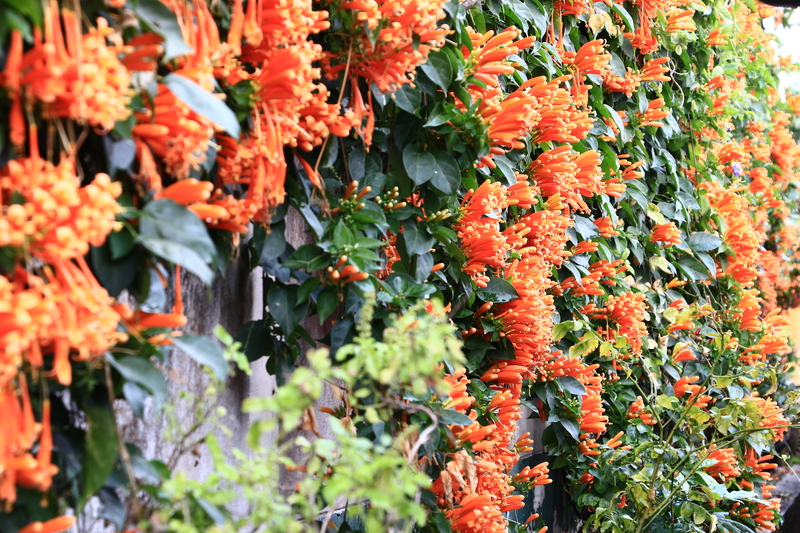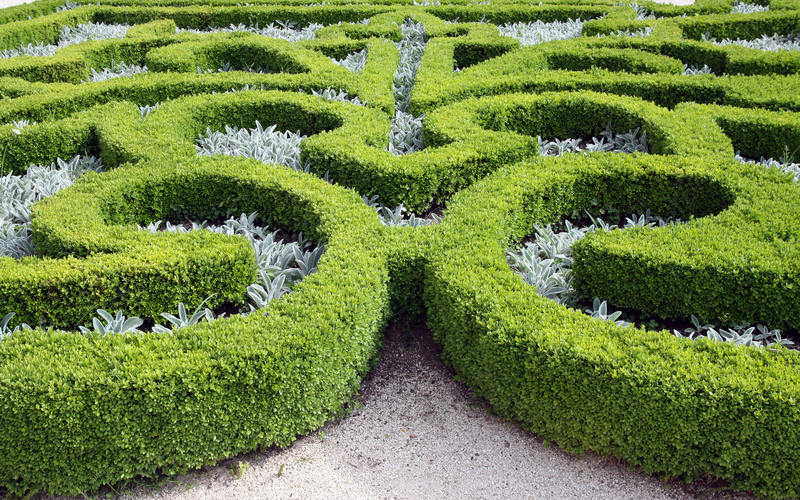Shade-Loving Plants That Flourish in Window Boxes
Window boxes are a delightful way to bring life, color, and charm to shaded areas of your home. Shade-loving plants are uniquely adapted to thrive where sunlight is minimal--making them perfect candidates for north-facing windows or locations shielded by trees. Carefully selecting shade-tolerant plants for window boxes will ensure a flourishing mini garden, even in low-light conditions. In this comprehensive guide, we'll explore the best shade-loving plants for window boxes, how to arrange them, and expert tips for year-round lushness.
Why Choose Shade-Loving Plants for Window Boxes?
Not all plants require full sunshine to thrive. In fact, many species prefer shaded environments, making them perfect for window boxes receiving indirect light. Often, the north or east side of houses gets less than four hours of morning sunlight, while awnings, overhangs, or trees further filter the available light.
- Versatility: Shade-tolerant window box plants offer a broad palette of leaf shapes, textures, and colors.
- Low Maintenance: Many shade-tolerant plants need less watering and can withstand cooler, damper environments.
- Continuous Interest: Foliage-focused combination planting ensures year-round visual interest, even when not in bloom.
By understanding the needs of shade-adapted plants, you can create window box displays that remain vibrant and healthy, even in the shadiest spots.

The Best Shade-Loving Plants for Window Boxes
Selecting the right shade plants for window boxes involves assessing your available light, as well as your desired color palette and maintenance level. Below are the best options, categorized by their principal features.
Top Shade-Loving Trailing Plants
- Lobelia (Lobelia erinus): This classic trailing plant flourishes in partial to full shade. Its delicate blue, white, or purple flowers spill gracefully from window boxes.
- English Ivy (Hedera helix): Renowned for its lush, glossy foliage, English ivy thrives in low-light settings and creates a cascading effect in shaded window boxes.
- Sweet Potato Vine (Ipomoea batatas): With chartreuse or deep-purple leaves, sweet potato vine adds bold texture and color beneath taller plants.
Outstanding Foliage Plants for Shady Window Boxes
- Hosta (Hosta spp.): Famed for their beautiful, variegated leaves, hostas come in a range of green, blue, and gold hues. They are compact varieties perfect for window boxes.
- Heuchera (Coral Bells): Heuchera shines with colorful, textured foliage--ranging from burgundy and lime to silvery shades--making it ideal for shade-loving window garden displays.
- Ferns: Boston fern, maidenhair, and other compact ferns thrive in shaded environments and add an airy, woodland feel to your window box.
Flowering Shade Plants for Window Boxes
- Impatiens (Impatiens walleriana): Known for masses of blooms in pink, red, orange, and white, impatiens are the quintessential shade window box plant.
- Begonias (especially Begonia semperflorens and Rex begonia): With their vibrant blossoms and ornamental leaves, begonias excel in partial to full shade.
- Caladium: Noted for its bold, heart-shaped leaves splashed with pink, red, and white; a striking accent for any shaded box.
Unique Shade-Loving Plants for Texture and Contrast
- Lamb's Ear (Stachys byzantina): Velvety, silver leaves make this plant a tactile and visual delight for shaded boxes.
- Liriope: This grass-like perennial thrives in shade and provides neat, vertical interest with the bonus of tiny blue flowers in late summer.
- Torenia (Wishbone Flower): This compact bloomer loves shade and fills boxes with vivid blue, purple, or yellow flowers all summer.
How to Design a Stunning Shade Window Box
Combining shade-loving species in window boxes is both an art and a science. Success lies in providing each plant the right conditions and grouping them attractively by size, color, and texture.
Essential Steps to Craft Your Shade Window Box Display:
- Assess Your Light: Is your window box in deep shade (no direct sun), partial shade (2-4 hours of morning sun), or filtered shade (light dappled through leaves)? Choose plants matched to your specific conditions.
- Pick a Color Theme: Harmonize foliage and flower colors, or create contrast with bold hues and silvery or variegated leaves.
- Layer Heights: Place taller plants in the back (closest to the house wall) and trailing or shorter plants at the front. This ensures every species gets adequate airflow and visual prominence.
- Mix Textures: Combine broad-leaved plants (like hosta or caladium) with airy ferns or trailing vines for a lush, multi-dimensional effect.
- Ensure Moisture Balance: Choose plants with similar water needs to make care easier and avoid root rot or drought stress.
Pro tip: Arrange your plants while still in their nursery pots to preview combinations before planting.
Planting and Maintaining Shade-Tolerant Window Boxes
Proper planting and care are essential to cultivate flourishing shade window boxes. By following these steps, you'll promote healthy, blooming, and vibrant shade plant displays all season:
Soil Requirements
- Use a high-quality, moisture-retentive potting mix formulated for containers.
- Add organic matter (like compost or leaf mold) for extra nutrients and improved drainage.
Watering and Feeding
- Most shade-loving window box plants prefer evenly moist soil--water when the top inch feels dry.
- Feed bi-weekly during the growing season with a diluted balanced liquid fertilizer for consistent lushness.
Pruning and Deadheading
- Pinch back leggy stems to keep shapes tidy and encourage bushier growth.
- Remove spent flowers (deadheading) regularly to promote extended blooming on flowering varieties.
Disease and Pest Management
- Shaded conditions can foster mold or mildew; allow adequate air circulation between plants.
- Check regularly for slugs, snails, or aphids, especially on hostas and begonias.
- Avoid overwatering! Waterlogged soil can lead to root rot, especially in lower-light spots.
The Best Window Box Recipes for Shade-Loving Plants
Want to get started but unsure of combinations? Here are some stunning shade window box planting recipes to inspire you:
Classic Serenity - Lush Green Foliage
- Back: Compact hostas (such as 'Mouse Ears')
- Middle: Ferns and heuchera (choose contrasting leaf colors)
- Front: Trailing English ivy and sweet potato vine
Color Burst - Flower Power for the Shade
- Back: Nonstop begonias (in your choice of color)
- Middle: Caladium for dramatic variegated foliage
- Front: Cascading lobelia and impatiens along the edges
Woodland Jewel Box
- Back: Japanese painted fern and small hosta
- Middle: Heuchera 'Caramel' and lamb's ear for color and texture contrast
- Front: Trailing torenia or small-flowered fuschia
Caring for Shade Window Boxes Through the Seasons
While most shade plants thrive in the warm months, with a little planning, your window box can look attractive even in winter:
- Fall: Add ornamental cabbage, heuchera, and small evergreen ferns for late-season color and structure.
- Winter: Miniature evergreens such as dwarf boxwood or variegated ivy offer greenery. Add pine cones or branches for festive decoration.
- Spring: Replace seasonal displays with fresh shade-flowering annuals like violas, primroses, or forget-me-nots.
Remember to refresh soil each spring to support new plantings.
Frequently Asked Questions About Shade-Loving Window Box Plants
Can I grow vegetables or herbs in shaded window boxes?
Some herbs and leafy greens tolerate shade, including mint, parsley, chives, cress, and lettuce. While yields may be lower than in full sun, these can add a useful, edible element to your window box.
How dark is too dark for shade-tolerant plants?
Plants labeled "shade-tolerant" generally need at least dappled light. Very deep shade (such as a window facing a solid wall) may be too low-light for any plant. If your box is extremely dim, consider using plants labeled for "deep shade" such as ferns and certain ivies, or opt for decorative artificial plants.
How often should I fertilize shade plants in window boxes?
Fertilize every two weeks during peak growing season, being careful not to overfeed. Too much fertilizer can lead to lush leafy growth but fewer flowers.

Design Inspiration: Creative Ideas for Shade Window Boxes
- Monochromatic elegance: Use all-white shade flowers like white impatiens, white begonias, and variegated foliage for a cool, serene look.
- Drama with foliage: Mix black-leaf sweet potato vine, silver-frosted heuchera, and chartreuse sedges for an unusual and sculptural box.
- Pollinator-friendly shade box: Add Torenia and fuchsia for continuous blooms that attract hummingbirds and butterflies, even in light shade.
Conclusion: Thriving Shade Window Boxes Are Possible
With thoughtful selection and arrangement of shade-loving plants, your window boxes can become lush, low-maintenance gardens that bring beauty to even the shadiest corners of your home. Whether you prefer delicate trailing blooms, bold-leafed foliage, or a mix of both, there's a shade-tolerant plant perfect for your space. Experiment with combinations, adjust for your unique microclimate, and enjoy a vibrant view from your window, season after season.
The right window box plants for shade will reward you with color, texture, and interest in areas where you may have thought nothing could grow. Use this guide, and you'll cultivate a flourishing display to be admired year-round.